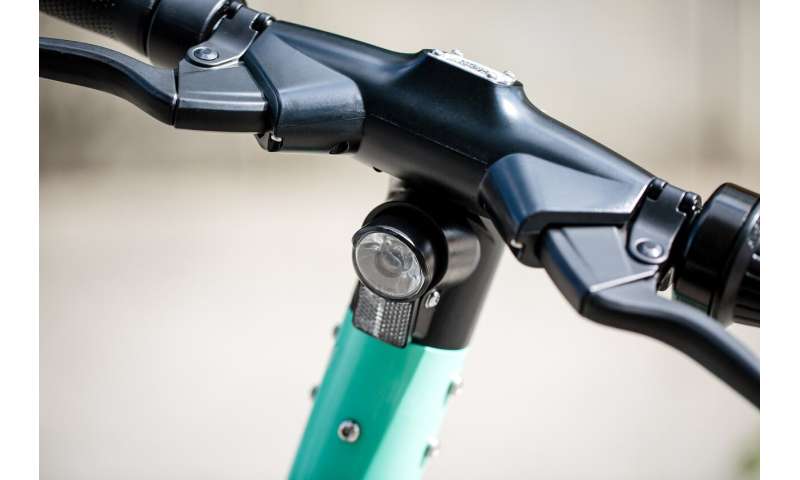
A Henry Ford Health System physician is sounding the alarm on the rising number of injuries caused from riding electric scooters, calling it a growing public health concern.
In a study of e-scooter injuries, Kathleen Yaremchuk, M.D., chair of the Department of Otolaryngology—Head and Neck Surgery, says a review of emergency visits in the last three years shows e-scooter injuries have increased significantly with many of them related to head and neck injuries. The study describes how the types of injuries which include concussions, fractures, contusions and abrasions, lacerations and internal organ injuries have changed since the introduction of e-scooter rideshare systems to the public in September 2017.
The study’s break down on the type of injuries shows that head and neck injuries made up nearly 28% of the total injuries. Results were also broken down by age groups and showed that from 2009 to 2017, patients who were 17 years old or younger made up the most injured age group. After 2017, the demographic of 18-to-44-year-olds became the most injured age group, which suggests that e-scooter injuries occur predominantly with older users.
“I’ve seen riders not wearing helmets, two or three riders on one e-scooter recklessly weaving in and out of traffic. The numbers of injuries we’re seeing should be a wake-up call about the safety risks of riding these modes of transportation,” says Dr. Yaremchuk, the study’s senior author.
Results of Henry Ford’s retrospective study were presented at the annual meeting of the American Academy of Otolaryngology.
The Henry Ford research team found that since the introduction of rideshare e-scooters, motorized vehicles that can reach speeds of up to 35 miles per hour, injuries have increased as more people gravitate to the inexpensive and convenient form of transportation used mostly in crowded urban centers.
“We hope the study will help educate users of rideshare e-scooters about the potential for serious head and neck injuries and the safety precautions they should take,” says Dr. Yaremchuk.
Rideshare programs have become one of the most popular transportation options in urban centers and college campuses. E-scooters are part of the Micromobility revolution that has been called the future of urban transportation and refers to a range of small, lightweight vehicles that include bicycles, Ebikes, electric scooters and skateboards, shared bicycles and electric pedal-assisted bicycles.
According to the Henry Ford study, from data collected and analyzed from the 2019 United States Consumer Product Safety Commission there were more than 100,000 estimated e-scooter injuries reported from January 2009 to December 2019 involving e-scooters.
From 2009 to 2017, the incidence of injuries year-over-year remained relatively constant. But since 2017, with the introduction of e-scooter rideshare programs, the incidence of total injuries significantly increased 3.5 times. Head and neck injuries also increased 4.5 times during that period.
The most common type of head and neck injuries included:
- Internal organs, including brain injuries (32.5%)
- Lacerations (24.9%)
- Contusions and abrasions (15.6%)
- Concussions (11.1%), and
- Fractures (7.8%).
Of the 92,353 patients who were treated at emergency departments, 25,562 or nearly 28% suffered head and neck injuries, while slightly more than 10% (9,994) required hospitalization. E-scooter use fatalities made up just over 0.1% (105) with none of those deaths directly attributed to head and neck injuries.
“As a physician, I would recommend that people who use this mode of transportation wear a helmet and apply the same approach as when driving a car,” says Samantha Tam, M.D., study co-author and a specialist with the Department of Otolaryngology—Head and Neck Surgery at Henry Ford Health System.
If you plan to ride an electric scooter for the very first time, here are a few precautions safety experts say you should consider:
- Bring your own safety gear including a helmet, knee and elbow pads
- Wear appropriate clothing that won’t constrict your body while riding
- Understand the specifications, features and capabilities of the specific e-scooter you will be riding
- Observe traffic laws, focus on the path ahead and watch for pedestrians, cars and other obstacles
Source: Read Full Article
